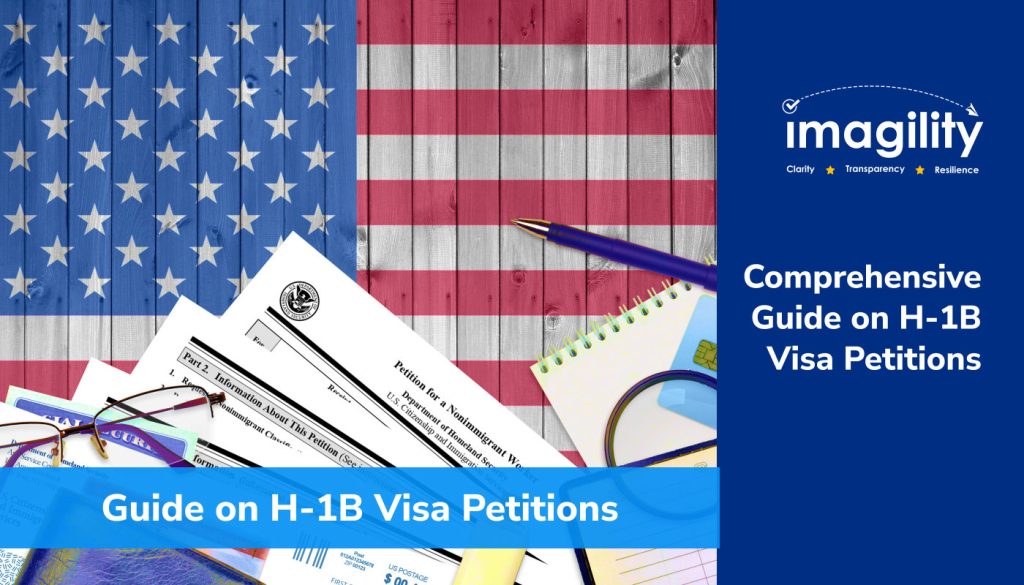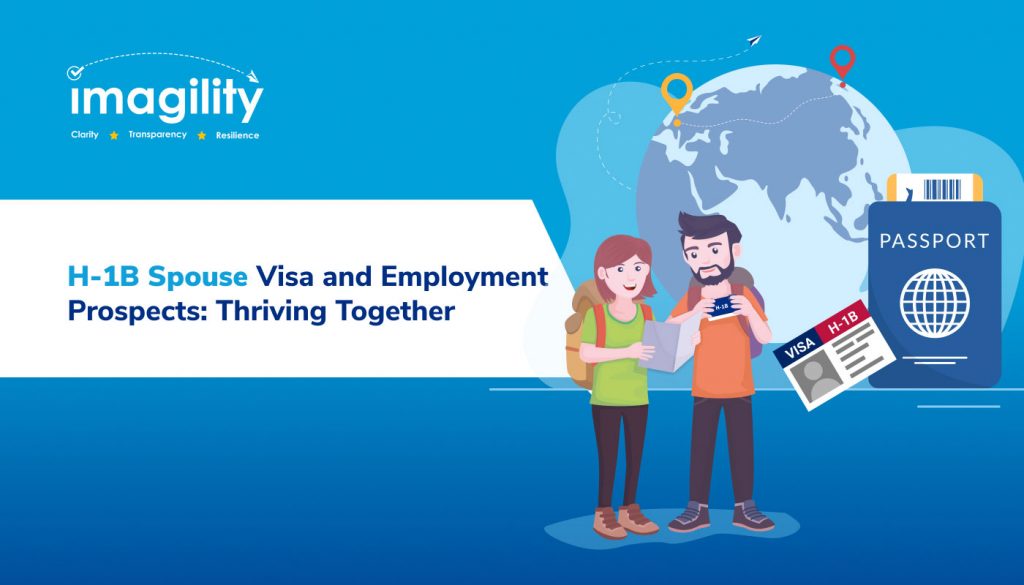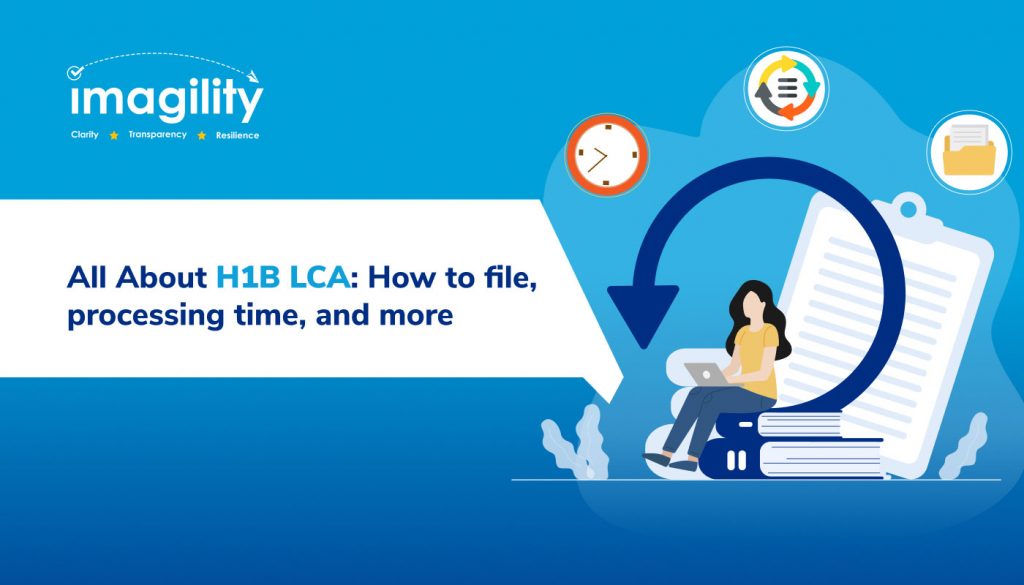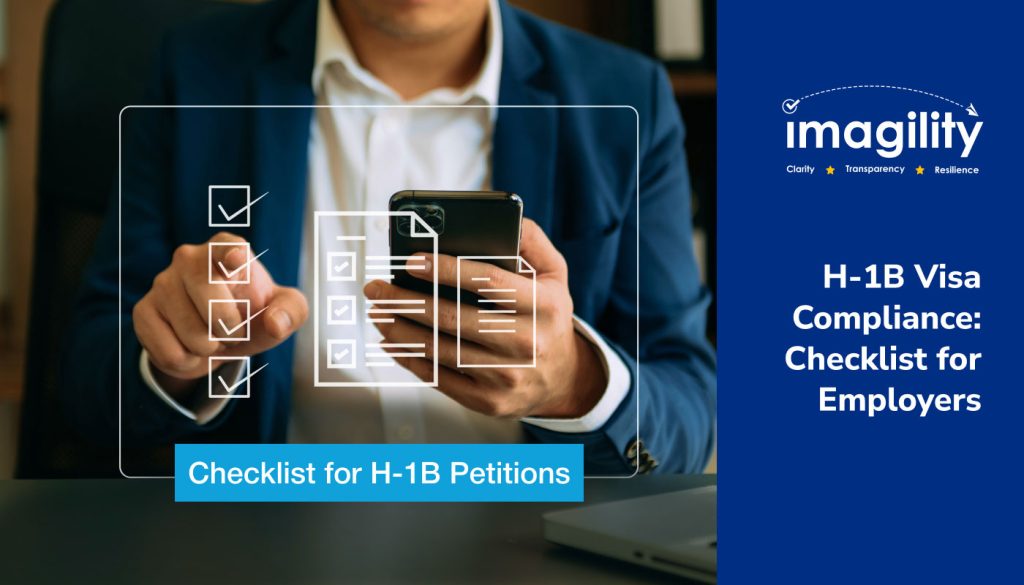What is the H-1B Visa
The H-1B visa is a type of visa that enables U.S. employers to bring in foreign workers for specialized roles that demand specific knowledge and expertise. These occupations span fields such as information technology, engineering, architecture, medicine, finance, and more. Understanding the intricate process of obtaining an H-1B visa is crucial for both employers and prospective employees seeking work in the United States.
Overview of H-1B Visas
H-1B Visa Eligibility
To be eligible for an H-1B visa,
- you need a job offer from a U.S. employer for a position demanding specialized knowledge.
- you must have a bachelor’s degree or equivalent experience in the specific field.
- your employer must demonstrate a shortage of qualified U.S. applicants for the particular role.
Specialized Occupations
H-1B visas are granted to individuals with specialized expertise in fields like IT, engineering, medicine, architecture, and more. Applicants often need a relevant bachelor’s degree or equivalent experience in their field of specialization to qualify for this visa.
Related Resource
Determining Specialty Occupation
H-1B Visa – Duration and Extensions
H-1B visas are typically granted for up to three years initially. These visas can then be extended for an additional three years, allowing a maximum total of six years.
Employer Sponsorship
Employers must sponsor H-1B visa holders by filing the required paperwork with the U.S. government. Employers must file an LCA with the Department of Labor (DOL) to affirm they will pay the prevailing wage and meet working condition requirements.
Numerical Cap on H-1B Visas
The U.S. government imposes an annual limit on the number of H-1B visas issued. Most applicants are subject to a cap of 65,000 visas per fiscal year. An additional 20,000 visas are available for individuals with advanced degrees from U.S. universities. H-1B visa holders’ spouses and unmarried children under 21 can apply for H-4 visas to accompany them to the U.S.
Related Resource
H1B Spouse Visa and Employment Prospects: Thriving Together
H-1B Petition Filing Process
Employers initiate the H-1B visa filing process by filing an LCA with the U.S. Department of Labor, outlining job specifications and compliance-related terms. After the LCA is approved, employers submit Form I-129, Petition for a Nonimmigrant Worker, to the United States Citizenship and Immigration Services (USCIS) for H-1B petition processing.
The H-1B visa petition filing process is a multi-step procedure that involves meticulous documentation, adherence to regulatory requirements, and coordination between employers, employees, and government agencies. Here’s an overview of the key steps in the H-1B visa petition filing process.
Related Resource
All about H1B LCA: How to file, processing time, and more
Employer’s Role
Labor Condition Application (LCA) Filing
- Employers must file an LCA with the U.S. Department of Labor (DOL) for the intended H-1B employee.
- The LCA outlines job specifics, including wages, work location, and compliance-related terms.
Form I-129 (Petition for a Nonimmigrant Worker) Submission
- After the approval of the LCA, employers file Form I-129 with the USCIS.
- The petition includes comprehensive documentation regarding the job role, the employee’s qualifications, and the employer’s credentials.
Related Resource
H-1B Visa Compliance: Checklist for Employers
Employee’s Role
Employees must provide the necessary documentation to support their qualifications and eligibility for the H-1B visa. USCIS might require interviews or additional information from the employee during the application process, for which the employees will need to be prepared.
USCIS Processing Time for H-1B Visas
The USCIS typically takes around 2 to 5 months to process and approve H-1B petitions. H-1B petitions are typically submitted annually, with the window opening on April 1st for an intended employment start date of October 1st. USCIS imposes an annual cap on the number of H-1B visas issued, with additional quotas for individuals with advanced degrees from U.S. universities.
USCIS will review and process submitted petitions, which can take between 2 to 5 months. Once the petition is approved, USCIS will issue notifications to the employer and the employee, allowing the individual to work in the U.S. under H-1B status.
Related Resource
H-1B Visa Processing Time: What You Need to Know
Legal Compliance
Employers must comply strictly with the terms stated in the approved LCA, such as paying the specified wages and maintaining the designated work location. They must also maintain a comprehensive public access file for each H-1B employee containing essential compliance-related documentation.
Staying updated with evolving immigration regulations is crucial to ensure ongoing compliance during the petition process. It is also a good idea to seek legal counsel or immigration advisors who can help navigate complex regulations and ensure adherence to the latest requirements.
Legal Compliance & Expertise in H-1B Petitions
- LCA Adherence: Ensuring strict compliance with terms stated in the filed LCAs, including wages, work location, and prevailing wage rates.
- Public Access File Maintenance: Employers must meticulously maintain a comprehensive public access file for each H-1B employee, containing essential documentation and compliance-related records.
- I-9 Documentation Compliance: Adhering to I-9 documentation requirements is crucial, avoiding common errors to prevent penalties and legal ramifications.
H-1B Visa Duration & Extensions
H-1B visas are typically granted for a period of 3 years, with the option to extend for an additional three years. In certain cases, extensions beyond the 6-year limit are possible, depending upon factors such as pending labor certifications or I-140 Petitions for Immigrant Workers.
Role of Technology in H-1B Visa Petitions – Imagility’s Services and Technological Integration
At Imagility, we leverage cutting-edge technology to revolutionize the H-1B visa application journey. Our collaborative platform brings together beneficiaries, petitioners, and attorneys, fostering a seamless and efficient process. Imagility simplifies the process of tracking and managing the essential documentation, ensuring a hassle-free and compliant experience for all stakeholders involved in the visa application process. Imagility prioritizes not just innovation but also compliance, making the intricate landscape of immigration more accessible and manageable for everyone.
Contact us today at +1 603 782 4622 / +1 617 865 6588 to explore personalized solutions for your H-1B visa needs.
Related Resource
Conclusion
Navigating the complexities of H-1B visa petitions requires comprehensive knowledge of the filing process, strict adherence to legal compliance, and the integration of technological solutions like Imagility’s platform. By maintaining stringent compliance and leveraging technological advancements, employers can successfully secure H-1B visas for their specialized workforce, contributing to their business growth and fostering diversity in the United States’ talent pool.
Helpful Resources on H-1B Visas
The H-1B Playbook
H-1B Visa FAQs
H1B Visa Stamping Made Simple: A Step-by-Step Guide
Everything You Need to Know About the H-1B Visa Application Process
Tips for Successful H-1B Visa Interviews
H-1B Visa Processing Time: What You Need to Know
H-1B Registration Process
Everything You Need to Know About the H-1B Visa Application Process
H-1B Visa Extensions through Imagility: Process and Timelines
Improving H-1B Outcomes for Petitioners
Improving H-1B Workload for Attorneys














